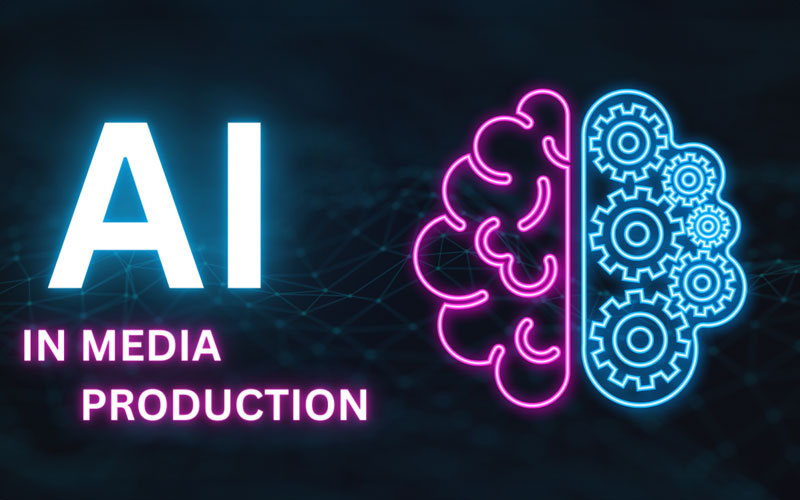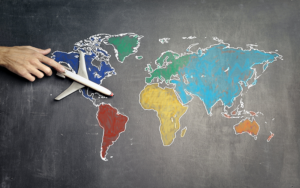The integration of artificial intelligence (AI) in media production is heralding a transformative era, revolutionizing the way content is created and consumed in the media industry. The integration of AI into media production is not just revolutionizing existing processes but is also paving the way for unprecedented forms of content creation. In this in-depth exploration, we dissect how AI is influencing various facets of media production, from streamlining workflows to introducing new storytelling techniques.
Table of Contents
The Advent of AI in Media: A Historical Perspective
To appreciate the current advancements, it’s essential to understand the historical context. AI’s journey in media production began with simple automation tools and has now evolved into sophisticated systems capable of creative decision-making. This section will trace this evolution, highlighting key milestones.
AI-Driven Content Creation: Unleashing Creativity
One of the most significant impacts of AI is in the realm of content creation. AI algorithms are now capable of writing scripts, composing music, and even creating virtual actors. This segment will delve into various examples, illustrating AI’s role in enhancing creativity and efficiency.
- Scriptwriting and Storytelling: AI tools are aiding scriptwriters by suggesting plot twists, dialogues, and character development, based on data-driven insights.
- Music and Sound Design: AI-generated music and sound effects are becoming increasingly prevalent, tailored to the mood and tone of the media content.
- Virtual Actors and Animation: Advanced AI models are creating hyper-realistic virtual actors and animations, reducing the need for extensive human casts and simplifying production logistics.
Enhancing Production Quality with AI
AI’s contribution to enhancing production quality cannot be overstated. This section will focus on how AI is used in editing, visual effects (VFX), and post-production to elevate the quality of media content.
- Automated Editing: AI tools can now edit videos by analyzing content for pacing, continuity, and narrative coherence, significantly reducing manual editing time.
- Visual Effects and CGI: AI is revolutionizing VFX, enabling more realistic and complex effects that were previously impossible or too costly to achieve.
- Post-Production Enhancements: From color correction to sound balancing, AI algorithms are fine-tuning the final output to achieve a polished and professional look.
AI in Newsrooms and Journalism
The use of AI in newsrooms is transforming journalism. This part will cover how AI is being utilized for news gathering, reporting, and even combating fake news.
- Automated Reporting: AI-driven algorithms are now capable of writing straightforward news reports, freeing journalists to focus on more complex stories.
- Data Analysis and Visualization: AI tools are aiding journalists in analyzing large data sets to uncover trends and stories, complete with compelling visualizations.
- Combating Misinformation: AI systems are increasingly deployed to detect and flag fake news, helping maintain the integrity of information in the media.
Ethical Considerations and Challenges
With great power comes great responsibility. This section will delve into the ethical considerations and challenges surrounding the use of AI in media production.
- Bias and Representation: Concerns about AI algorithms perpetuating biases and misrepresentation in media content.
- Job Displacement: The impact of AI on employment in the media sector, and how the industry can adapt to these changes.
- Intellectual Property Rights: Issues surrounding the ownership of AI-generated content and its implications for creative professionals.
The Future of AI in Media Production
As we look forward, it’s clear that AI will continue to play a pivotal role in media production. This concluding section will speculate on future trends and potential advancements in AI technology in the media industry.
- Personalized Content Creation: The potential for AI to create highly personalized content tailored to individual preferences.
- Interactive and Immersive Experiences: How AI could enhance interactive media and virtual reality (VR) experiences.
- Collaborative AI-Human Creativity: The evolving partnership between AI and human creativity, leading to novel forms of content that are currently unimaginable.
AI in Media Production is an ongoing journey marked by incredible advancements and potential. As we embrace this new era, the media industry stands on the cusp of a revolutionary change, promising to redefine the very nature of content creation and consumption.
AI in Media Production – References
- Johnson, L. (2022). The Ethical Implications of AI in Media. Media Ethics Quarterly, 18(2), 30-45.
- AI in Media Production. (2024). Retrieved from https://www.wmdpublishing.com/blog





